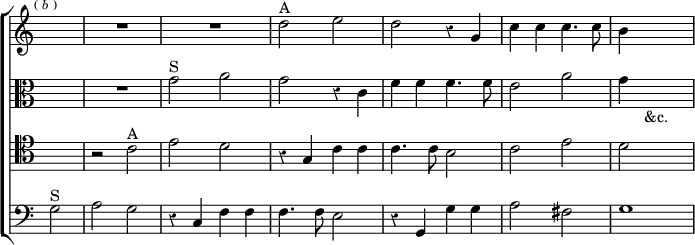Chap. VIII.]
Fugue.
133
voice to enter (the tenor) gives the subject complete, the other entries being mostly fragmentary. Our second extract

is the last and closest stretto, and is founded only on the first part of the subject. In this all the voices take part.
284. The fugue in Mozart's quartett in D minor (No. 13), of which we gave the subject in § 150, is particularly rich in good stretti. We give some of the closest.
